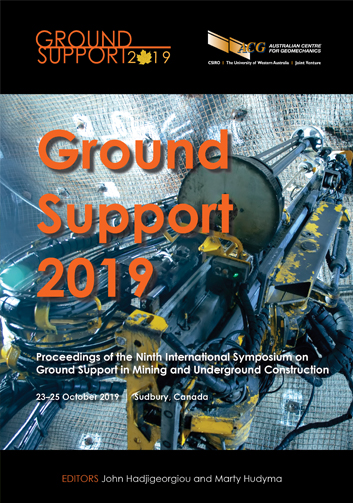Rusty bolts: planning for corrosion of ground support in underground mines

|
Authors: Preston, RP; Roy, JM; Bewick, RP |
DOI https://doi.org/10.36487/ACG_rep/1925_29_Preston
Cite As:
Preston, RP, Roy, JM & Bewick, RP 2019, 'Rusty bolts: planning for corrosion of ground support in underground mines', in J Hadjigeorgiou & M Hudyma (eds), Ground Support 2019: Proceedings of the Ninth International Symposium on Ground Support in Mining and Underground Construction, Australian Centre for Geomechanics, Perth, pp. 423-436, https://doi.org/10.36487/ACG_rep/1925_29_Preston
Abstract:
Steel ground support elements installed in underground excavations are exposed to groundwater and atmospheres that can cause corrosion of the steel and thus a loss of support capacity over time. For high tonnage mines, where in some cases, hundreds of kilometres of drifts may be excavated, the ground support must be maintained for long periods of the mine life. Ground support corrosion must therefore be considered early in the planning process and this paper discusses an approach to classify the possible corrosive conditions in a mine, estimate ranges of possible corrosion rates and develop hazard maps that can be used to develop forecasts of loss of support capacity and timing of rehabilitation. Currently available corrosion protection technologies are also discussed and compared qualitatively. Better understanding of ground support corrosion can improve health and safety, reduce costly delays to production due to the ability to schedule support replacement in the mine plan and provide mine managers with more realistic forecasts of ground support costs and equipment needs over the life-of-mine.
Keywords: ground support, corrosion, mine plan, mine schedule
© Copyright 2026, Australian Centre for Geomechanics (ACG), The University of Western Australia. All rights reserved.
View copyright/legal information
Please direct any queries or error reports to repository-acg@uwa.edu.au
View copyright/legal information
Please direct any queries or error reports to repository-acg@uwa.edu.au